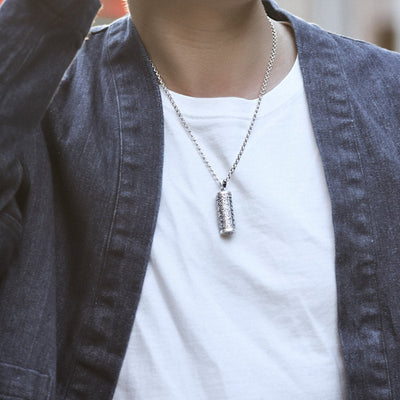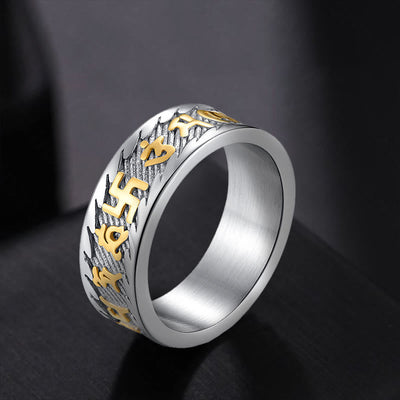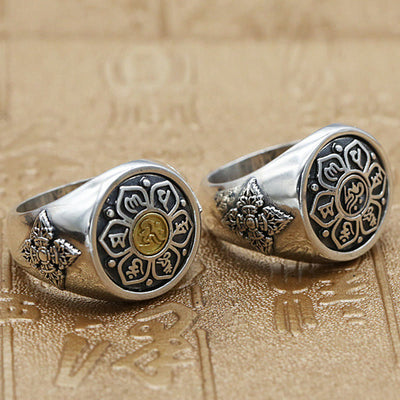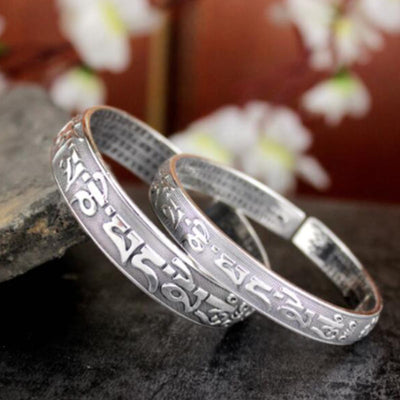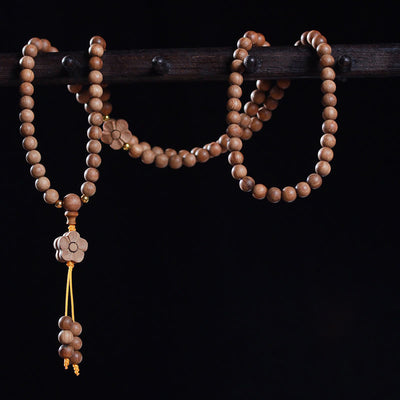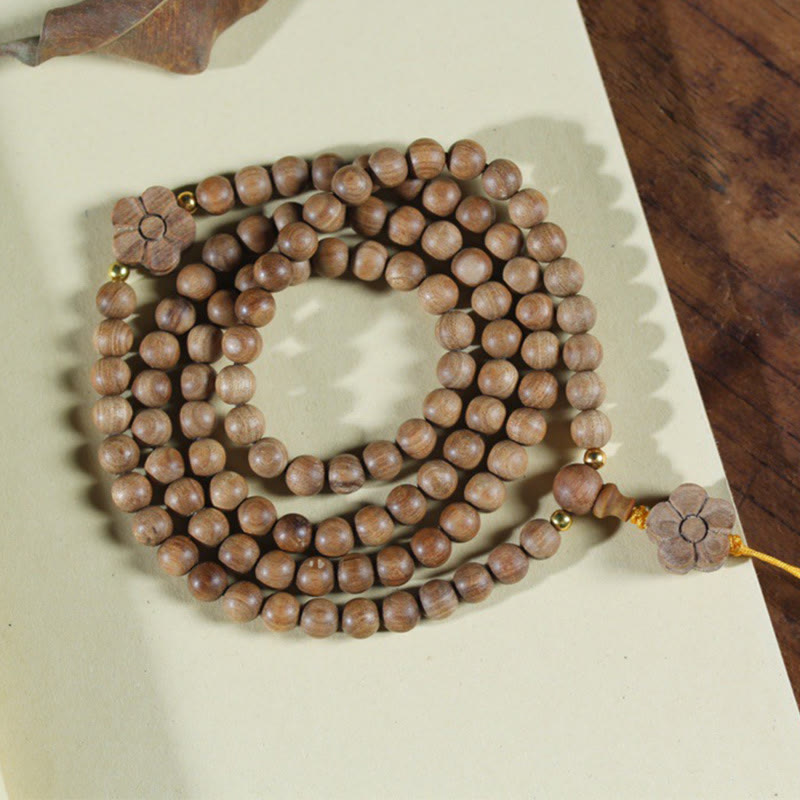Have you ever seen someone wearing a beautiful string of beads and wondered about their significance? More than just a spiritual accessory, these are mala beads, ancient tools designed to guide meditation and center the mind. If you're looking to deepen your mindfulness practice or connect with a more intentional way of living, understanding the profound world of mala beads is a beautiful first step. This guide will explore the rich history and symbolism behind these sacred tools, from their traditional use in Japa meditation to the powerful meaning of their 108 beads.
Mala beads are not simply jewelry; they are a tactile guide that anchors your focus, helps you count mantras, and serves as a physical reminder of the intentions you set. Whether you are new to meditation or a seasoned practitioner, incorporating a mala can transform your journey inward, bringing a new level of depth and serenity to your practice.
What Are Mala Beads? A Deeper Look
At its core, a mala (a Sanskrit word meaning "garland") is a string of beads used in meditation and prayer. Traditionally known as buddhist prayer beads or Japa beads, their origin traces back thousands of years to ancient spiritual traditions like Hinduism and Buddhism. While they have become popular in the wellness community as a symbol of mindfulness, their primary purpose remains a functional one: to keep count of mantras, breaths, or affirmations during meditation.
Each component of a mala is steeped in symbolism, designed to keep the practitioner focused and grounded. A typical mala consists of 108 counting beads, a distinct 'guru' bead, and a tassel. This structure creates a continuous loop that represents the cyclical nature of life and allows the meditator to move through their practice without the distraction of counting.

The Sacred Anatomy of a Mala
To truly understand the mala beads meaning, it's essential to look at each of its parts. Every element works in harmony to support the user's spiritual practice, turning a simple string of beads into a powerful tool for self-discovery.
The Significance of 108 Beads
One of the most common questions is, "Why 108 beads?" The number 108 holds profound spiritual significance across many cultures and disciplines. While there are numerous interpretations, the 108 beads meaning is often linked to spiritual completion and the universe itself.
- Spiritual Significance: In many Eastern traditions, the number 1 represents the divine or higher truth, 0 represents emptiness or completeness in spiritual practice, and 8 represents infinity and timelessness.
- Astronomical Connection: The distance between the Sun and Earth is approximately 108 times the Sun's diameter, and the distance between the Moon and Earth is about 108 times the Moon's diameter.
- Human Body: Ayurvedic and yogic traditions believe there are 108 nadis (energy lines) converging to form the heart chakra.
Reciting a mantra 108 times is believed to resonate with these universal and internal energies, creating a powerful spiritual connection. The video below offers a deeper exploration of this sacred number.
The Guru Bead: Your Point of Reflection
The 109th bead, which is larger or distinct from the others, is called the Guru bead or Meru bead. It is not used for counting but serves as the starting and ending point for the meditation cycle. When you reach the Guru bead, it’s a moment to pause, reflect on your practice, and express gratitude to your teachers or spiritual guides. It symbolizes the student-guru relationship and the wisdom we gain on our spiritual path.
The Tassel: A Symbol of Oneness
The tassel at the end of the mala represents our connection to the divine and to each other. The many individual threads bind together to form one, symbolizing oneness and the idea that everything is interconnected. It also represents prana (life force energy) and the highest state of consciousness. Many practitioners use the tassel to gently diffuse essential oils to enhance their meditation experience.
The Meaning Behind Different Mala Bead Materials
The material used to craft a mala adds another layer of intention and energy to your practice. Traditionally, buddhist mala beads were made from natural materials like rudraksha seeds or sandalwood, which are known for their calming and grounding properties. Today, malas are also crafted from a variety of gemstones, each carrying its own unique vibrational frequency and healing properties.
- Sandalwood: Promotes tranquility, relaxation, and a positive state of mind. Its soothing aroma can aid in focus.
- Rudraksha Seeds: Known as "Tears of Shiva," these seeds are believed to offer protection and shield against negative energies.
- Lapis Lazuli: A stone of truth and enlightenment, it encourages self-awareness and clarifies the mind.
- Turquoise: A protective stone associated with the throat chakra, it enhances communication and spiritual attunement.
- Rose Quartz: The stone of unconditional love, it opens the heart chakra to compassion, forgiveness, and peace.
Choosing a material that aligns with your personal intention can significantly enhance the power of your meditation. Whether you are seeking calm, clarity, or compassion, there is a mala bead perfectly suited to support your journey.

How to Use Mala Beads for Meditation and Intention Setting
Using a mala is a beautifully simple and effective way to practice meditation, especially for those new to the practice. The primary method is called Japa meditation, which involves the repetition of a mantra. This practice helps to quiet the "monkey mind" and bring you into a state of focused calm.
A Simple Japa Meditation Practice
To begin, find a comfortable, quiet space where you can sit undisturbed. Hold your mala in your right hand, draped between your middle and index fingers. The thumb is used to move from one bead to the next, symbolizing that you are moving through the practice without ego.
- Set Your Intention: Close your eyes and take a few deep breaths. Choose a mantra or affirmation that resonates with you. It can be a simple word like "peace," a Sanskrit mantra like "Om Shanti," or an affirmation like "I am calm and centered."
- Start at the Guru Bead: Let the tassel rest in your palm and locate the Guru bead with your fingers. Do not count this bead.
- Recite Your Mantra: Move to the first bead next to the Guru bead. As you hold it with your thumb, recite your chosen mantra either aloud or silently.
- Continue the Cycle: Move your thumb to the next bead and repeat your mantra. Continue this process for all 108 beads until you return to the Guru bead.
- Pause and Reflect: When you reach the Guru bead again, take a moment to sit in silence. If you wish to continue for another round, turn the mala around and go back in the opposite direction. It is traditional not to cross over the Guru bead.
This tactile connection with the beads makes the practice incredibly grounding. It provides a focal point for your energy and attention, making it easier to slip into a meditative state.

Choosing Your Mala: An Intuitive Process
Selecting a mala is a deeply personal and intuitive experience. There is no right or wrong way to choose. You might be drawn to a particular color, gemstone, or simply the overall feeling a mala gives you. Trust your intuition. The mala that stands out to you is often the one you need most at that moment. Consider what intentions you want to cultivate in your life—whether it's more peace, strength, or love—and look for a mala made from materials that support that energy. As noted by experts at Yoga Journal, the repetition involved in Japa meditation can create powerful shifts in consciousness, and having a mala that you feel connected to enhances this process.
Find Your Perfect Mala
Embrace tranquility and enhance your focus during meditation with this authentic 108-bead sandalwood mala bracelet. Learn more ➔
Conclusion: Your Journey with Mala Beads
Mala beads are far more than just a beautiful piece of spiritual jewelry; they are a bridge to a deeper, more intentional mindfulness practice. By understanding the meaning of mala beads and the significance of their 108-bead structure, you can unlock a powerful tool for meditation, focus, and self-discovery. They serve as a constant, tangible reminder of your intentions, helping you carry a sense of peace and purpose throughout your day.
Whether you are drawn to the calming energy of sandalwood or the clarifying properties of Lapis Lazuli, embracing a mala is an invitation to connect more deeply with yourself. We encourage you to explore our collection and find the mala that speaks to your soul, becoming a cherished companion on your path to wellness and inner harmony.
Frequently Asked Questions about Mala Beads
The primary purpose of mala beads is to aid in meditation and prayer. They are used as a tool to count mantras, affirmations, or breaths in sets of 108, which helps the practitioner stay focused and keep their mind from wandering. They also serve as a physical reminder of one's spiritual intentions.
While there are no strict "rules," there are traditional guidelines. It's suggested to use the right hand to hold the mala and the thumb to advance the beads. The index finger, which is associated with the ego, is typically not used to touch the beads. It is also traditional to not cross over the Guru bead; instead, you turn the mala around to begin a new cycle. Most importantly, treat your mala with respect as a sacred tool.
The number 108 is considered sacred in many Eastern religions and spiritual traditions for various reasons. It is believed to represent the universe, with connections to astronomy (the diameter of the Sun is about 108 times the Earth's), the body (108 energy lines converging at the heart chakra), and spiritual completion. A more detailed explanation can be found in a resource from the Chopra Center.
To "activate" or attune your mala to your energy, you can perform a small ceremony. Hold the mala in your hands, close your eyes, and set a clear intention or dedicate a mantra to it. Meditating with it for the first time by completing a full 108-count cycle is a powerful way to infuse it with your personal energy and purpose. Some also choose to cleanse their mala with sage smoke or by placing it in moonlight.
It is not disrespectful to wear mala beads, even if you are not a Buddhist or Hindu, as long as you wear them with respect and understanding of their spiritual significance. Many people wear them as a reminder of their intentions and mindfulness practice. It's generally advised to wear them under your clothing if you are in a situation where they might be snagged, and to avoid placing them on the floor out of respect.



